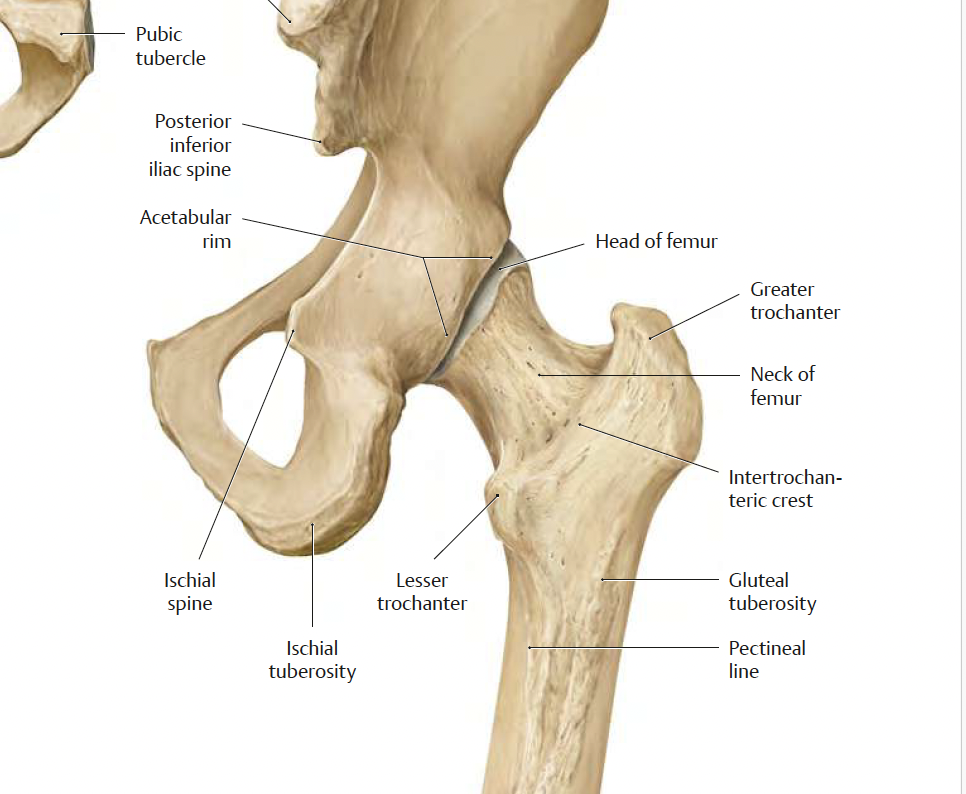bones of the lower limb
1/17
Earn XP
Description and Tags
(+some muscles)
Name | Mastery | Learn | Test | Matching | Spaced |
|---|
No study sessions yet.
18 Terms
what are the bones of the lower limb?
hip bone
femur
tibia (medial and bigger)
fibula (lateral and thinner)
tarsals (ankle bones)
metatarsals (mid foot bones)
phalanges
the hip bone is composed of three parts, what are those parts?
the ilium, ischium and pubis
what is the obturator foramen
the hole of the hip bone
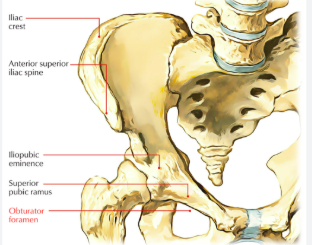
what are the surfaces of the hip bone
medial / internal and lateral / external instead of posterior and anterior
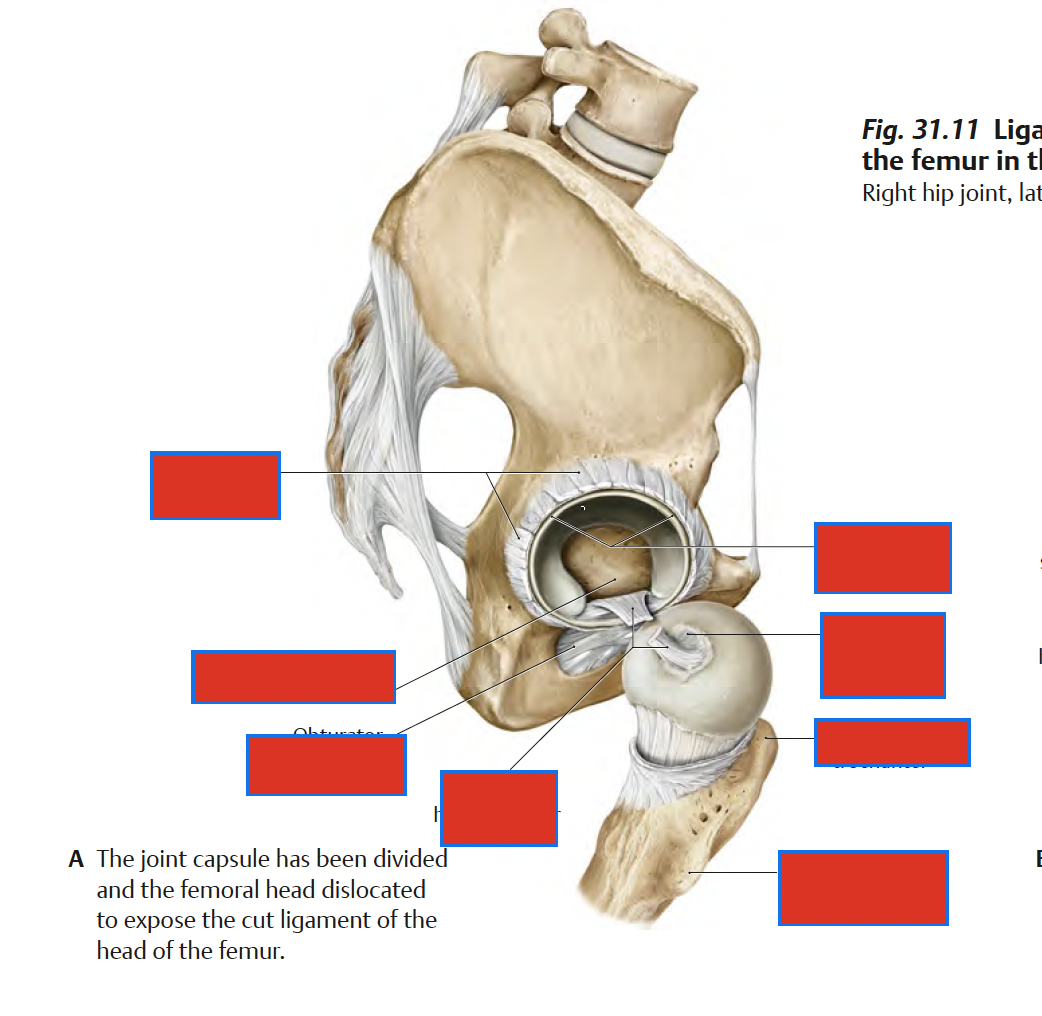
where is the acetabular fossa?
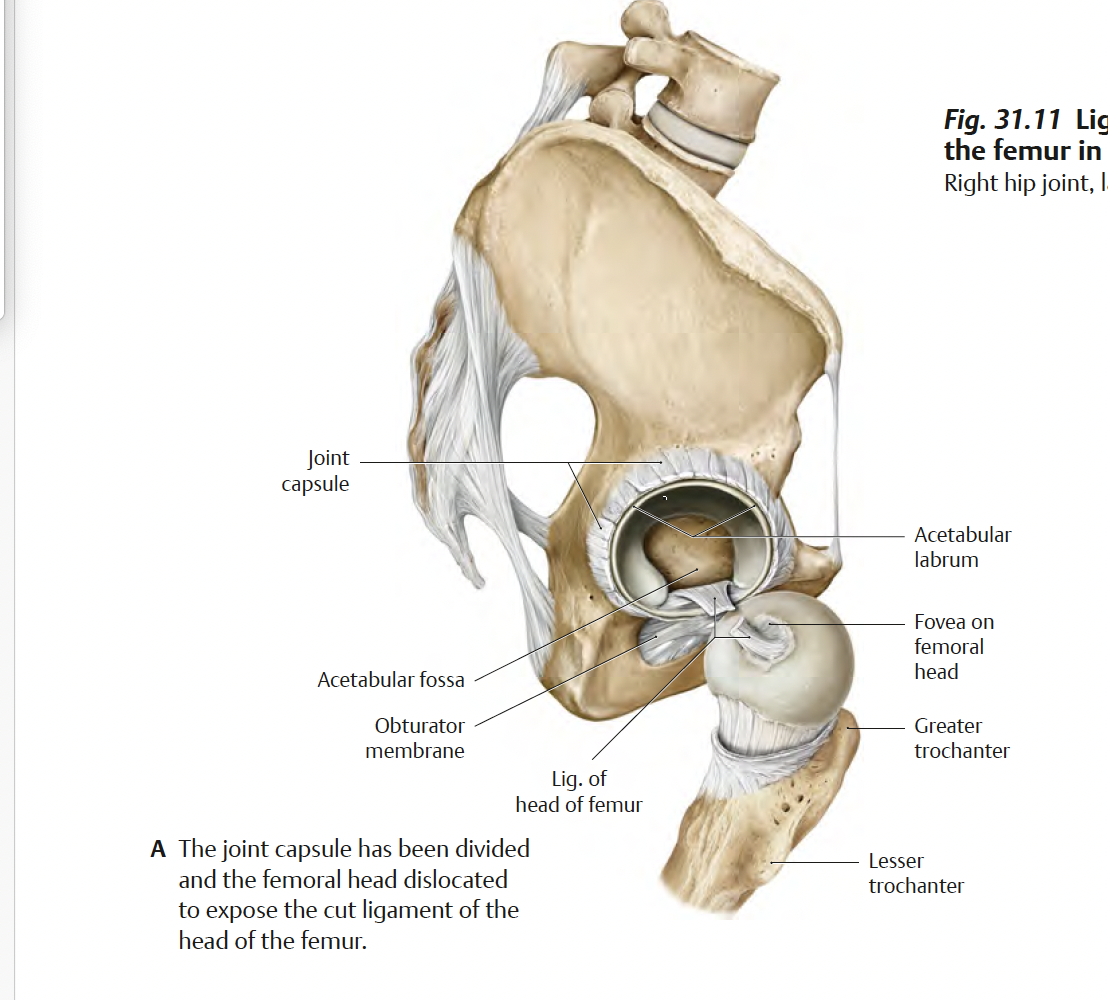
what type of joint is the hip joint
multiaxial so it is a ball and socket joint
is the hip joint a synovial joint, if yes or no, why?
it is as it is freely moveable and has a synovial cavity, capsule, and fluid
what are the three axes of the hip joint and what movements do they allow?
sagittal axis ; abduction and adduction
longitudinal (vertical) axis ; medial (internal) and lateral (external) rotation
transverse axis ; flexion and extension
because the hip joint has three axes, what specific movement does it allow?
circumduction → a combination of all movements in a cone like motion
to be anatomically correct what position must the acetubular fossa always be in?
laterally always
what are the spines of the hip bone (4)
anterior superior iliac spine
anterior inferior iliac spine
posterior inferior iliac spine
posterior superior iliac spine
a muscle associated with the hip bone is the sartorius what is its origin and insertion?
origin; anterior superior iliac spine
insertion; medial surface of tibia
something about the rectus femoris
something about the greater sciatic notch and greater sciatic nerve
something about sciatic nerves and blood vessels
something about the lesser sciatic notch probs where it is
what structure separates the greater sciatic notch and the lesser sciatic notch (question that likes to be asked in the exam)
the ischial spine
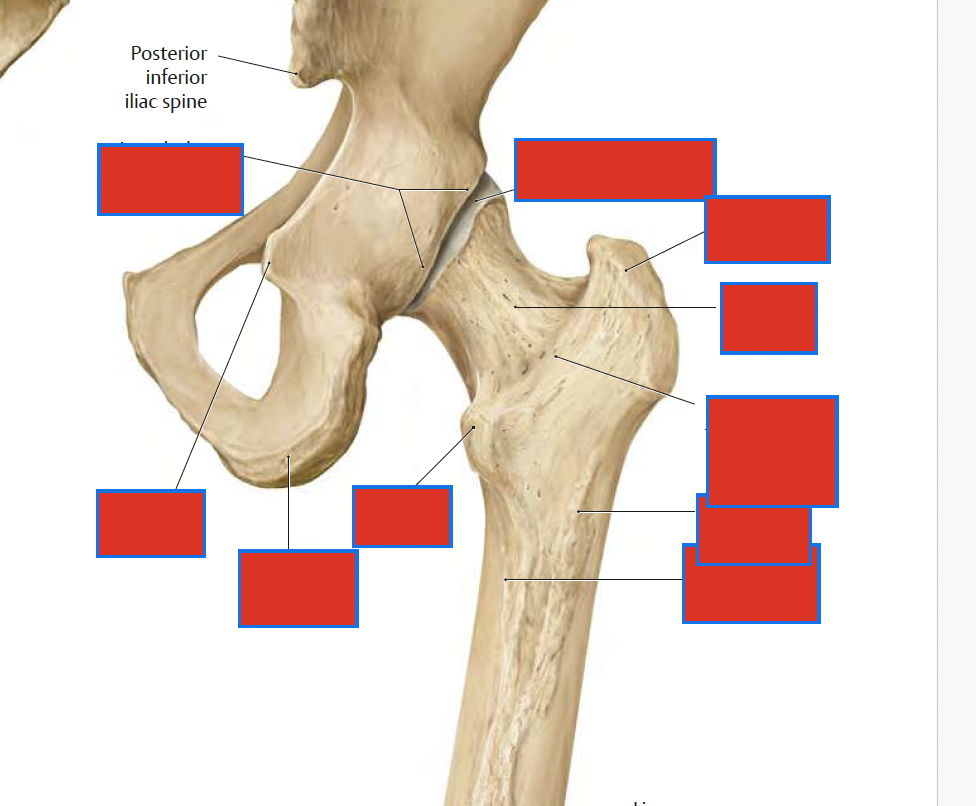
where is the ischial tuberosity
